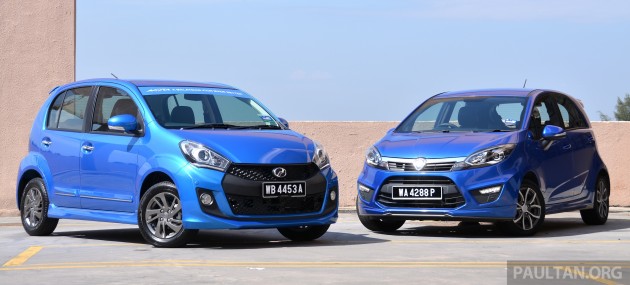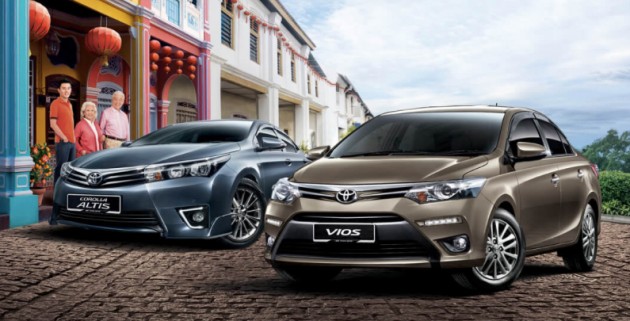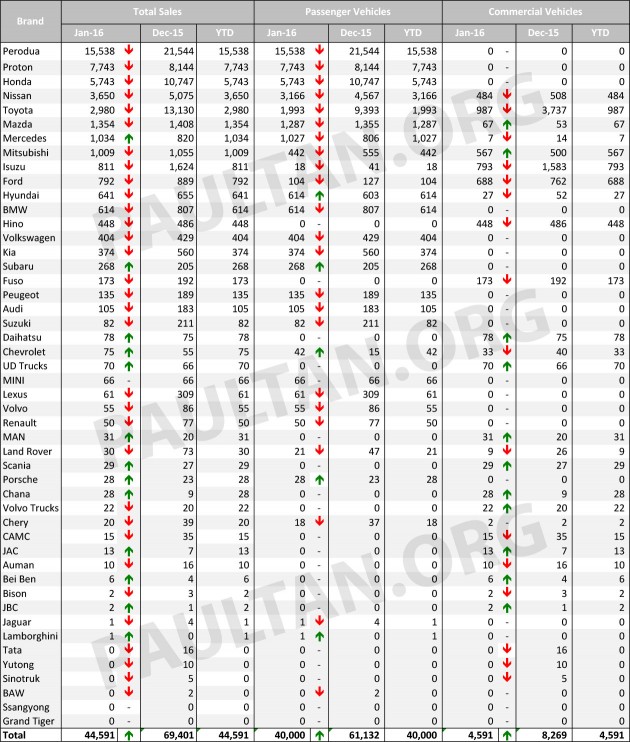It was bound to happen. After a bumper month in December – thanks to heavy rebates heaped to move cars off dealer lots on the last month of the year – the Malaysian automotive market contracted sharply in January 2016, impacted by industry-wide price hikes brought on by the depreciating value of the ringgit.
Although it still leads the market, Perodua saw sales fall by as much as 28% from 21,544 units in December to 15,538 units last month – despite being one of the few brands not to raise its prices this year (the RM1,500 pricier, now ABS-equipped Axia G notwithstanding).
The real surprise here was Proton, which was by far and away the least affected among the top five brands – it recorded a comparatively measly 5% drop from 8,144 units to 7,743. With the massive drops seen in the non-national segment (more of which you’ll read later), this minor loss enabled the national carmaker to retake the second spot in the standings.
Foreign makes were hardest hit by the upset forex, with non-national leader Honda registering a severe drop from 10,747 units sold in December to just 5,743 units last month, nearly halving (-47%) its sales.
But the biggest casualty was Toyota – the world’s largest carmaker sold just 2,980 vehicles in Malaysia last month, a staggering 77% drop from December’s 13,130 units. In particular, sales of its commercial vehicles fell from 3,737 units to just 987, likely due to the fact that the all-new Hilux pick-up is just around the corner.
Surprise, surprise, then – in spite of a 28% drop in sales from 5,075 units to 3,650 units, Toyota’s misfortunes enabled perennial fifth-placer Nissan to move past, ending up fourth in the first month of 2016.
With the currently challenging environment of the automotive industry, it’s astonishing that Mercedes-Benz managed to kick off the new year in style – Stuttgart extended its lead on the premium segment in Malaysia by posting a 26% increase to 1,034 units, from 820 the year before. Subaru also saw a surprisingly strong month, selling 63 more cars in January at 268 units, a 31% jump.
Elsewhere, Mazda cut its losses by registering a small 4% drop (1,354 units vs 1,408), putting it back into sixth place; meanwhile, Lexus saw an 80% drop in sales from 309 units to just 61 units. January also saw the introduction of a new brand, Lamborghini – which sold just a single unit last month.
Click on the table below to view an enlarged version.
Looking to sell your car? Sell it with Carro.














AI-generated Summary ✨
Many comments highlight a general decline in vehicle sales in early 2016, with specific concern over Toyota’s drastic 77% drop and reasons for the sharp decline, such as high prices and outdated specs. Several commenters question the accuracy of Proton’s sales figures, suggesting they may be inflated due to government fleet sales or other factors. There’s a consensus that car prices are affected by escalating costs, taxes, and limited discounts, prompting discussions on shifting consumer behaviors toward more affordable, safer, and better-equipped models like Honda, Mazda, and Volvo. Many advocate for boycotting uncompetitive brands like Toyota to put pressure on prices, safety features, and quality, while expressing hope that lower sales will lead to improved pricing and safety standards across the industry.